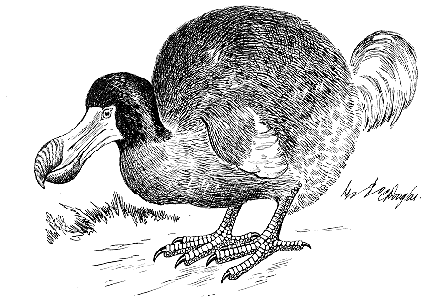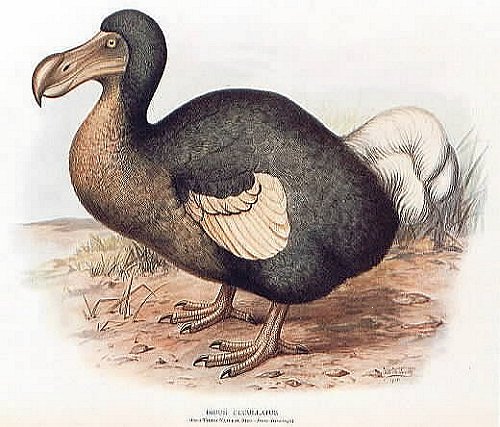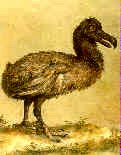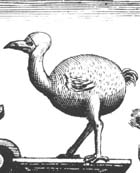
We discussed the biosphere (Ch. 3), starting with 'beasty-day' and touched upon the following issues
hierarchy in life: from organism to population to community to ecosystem.
Organism-organism interactions (competition, predation, symbiosis) and limiting factors of the physical environment that constrain K ('bottleneck factor' ultimately determines K).
Examples of the Dodo and the large tree-seed germination link was discussed. The Amer, Museum of Natural History in NYC (http://www.amnh.org/exhibitions/expeditions/treasure_fossil/Treasures/Dodo/dodo.html?dinos ) has a 'stuffed Dodo' - it is only a model, not a stuffed real one, made after pictures from old Dutch sailor journals and carvings in gable stones !!. The pictorial history of the Dodo is of interest: it appears that the ungainly critter was pictured fatter and fatter over time, and many later pictures show a bird that can not be supported by the true Dodo skeletons that have been found! see http://www.encyclopedia.mu/Nature/Fauna/Birds/Extinct/DodoImages.htm.
The story of the germinating seeds and the Dodo link has been hotly debated since it publication in the 1970s, and it may be that the tide is turning as much to human impact as Dodo-intermediated seed germination (see http://home.conceptsfa.nl/~pmaas/rea/dodobird.htm).
Other examples of peculiar animal interactions are the sloth-moth, and hippo-birdie.
We then went into "nature" where we defined a habitat, niche, community, ecosystem and biome, which are ultimately defined by physical factors (largely climate = T and precipitation -p) and biological factors. The world shows a latitudinal and elevational zonation in biomes (p and T). The readings show the six terrestrial biomes and the two major aquatic biomes (fresh water versus salt water). The marine biome can be subdivided in many sub systems depending on availability of light and nutrients (including our now familiar 'vent faunas').
Division of life can be done by function or by genetics. The functional roles are producers (autotrophs), consumers (heterotrophs, 1 and 2 rank) and decomposers. The first make organic matter from CO2, the second make organic matter from other organic matter, and the decomposers make inorganic carbon from organic matter, closing the cycle once more. With each step further away from the bottom of the food chain, energy is lost and less biomass is retained. This leads to the ecological pyramid, which shows that for a given biomass in the primary producers realm, respectively lesser amounts of carbon are retained in the higher sections of the foodchain.
The division of life by "similarity traits" or by genetics used to involve the standard five kingdoms with the master classes prokaryotes and eukaryotes, with viruses as a kind of garbage group ('degenerate life' now living a parasitic existence on a host that carries most functions). The readings have a good overview of this classification. The latest classification (1999) distinguishes between Archea, Bacteria (both prokaryotes) and Eukarya, with the presence of 'junk DNA' as an important criterium of distinction. This is still a developing story.
We closed with a consideration of the rates of primary production, resp. the Gross Primary Productivity (GPP) and the Net Primary Productivity (NPP), both expressed in grams C/m2 fixated per year. The difference between Gross and Net is the respiration term (release of CO2 and water for plant energy household). We looked at a chart with the various biomes, their surface area on earth, their NPP values and their total annual productivity (NPP * biome surface area). The tropical rainforests scored at the top in NPP (with swamps and marshes) and also produced the largest biomass per year in absolute sense. The ocean realm had much smaller NPP values, except for the coral reef environment, sometimes called the 'rainforest of the oceans'. Ultimately, the land produces about two times as much carbon by photosynthesis as the oceans. We have to realize that the "standing crop" or stock biomass in the oceans is about 1 % of that on land. So the organisms in the sea work harder and have a much higher turn over rate. We know this of course from common observation: on land we have trees of many tens to hundreds of years old while most marine organisms live only weeks or months.

Generic Dodo

Embellished Dodo

Mean and Lean Dodo

Spherical Dodo